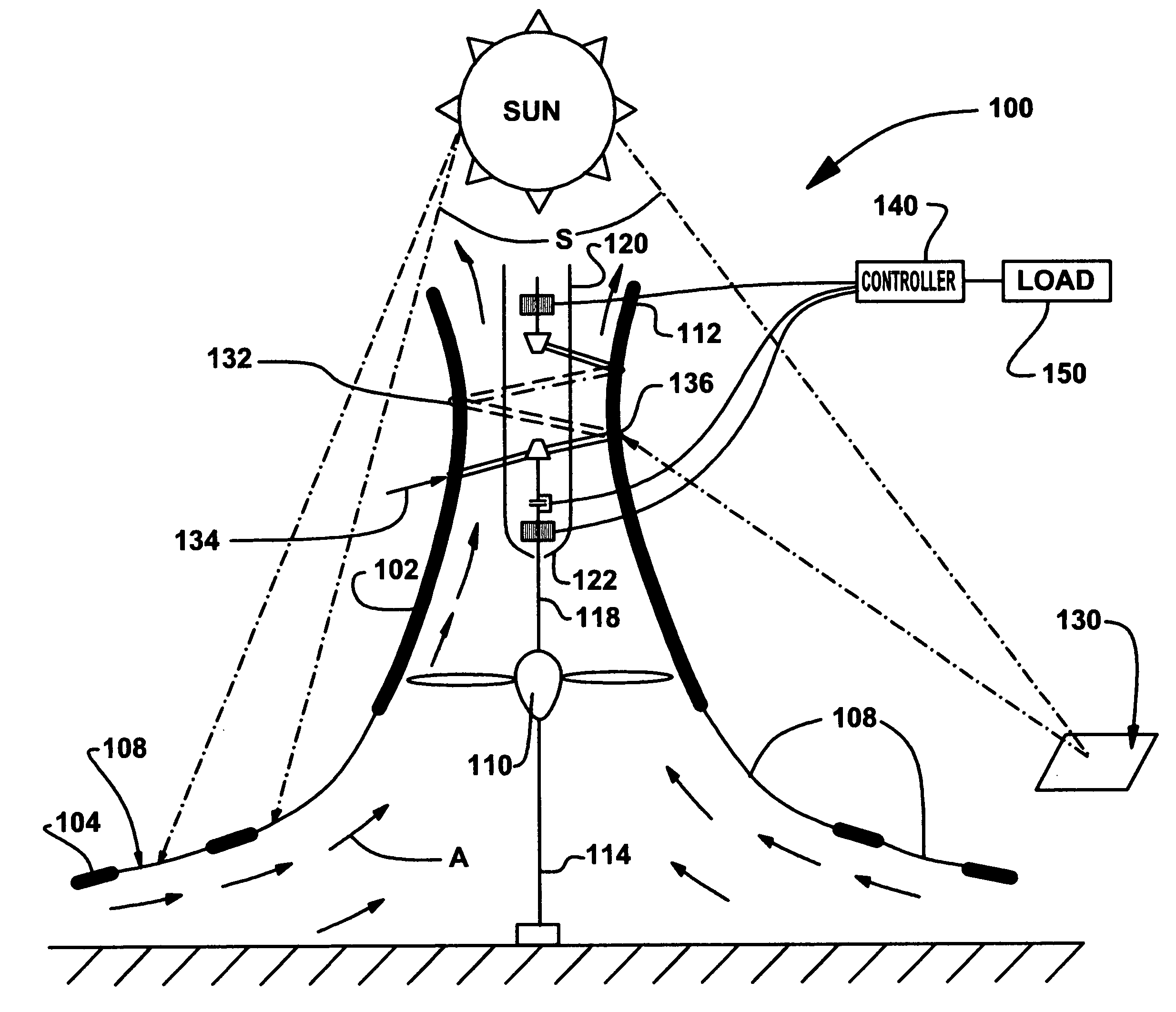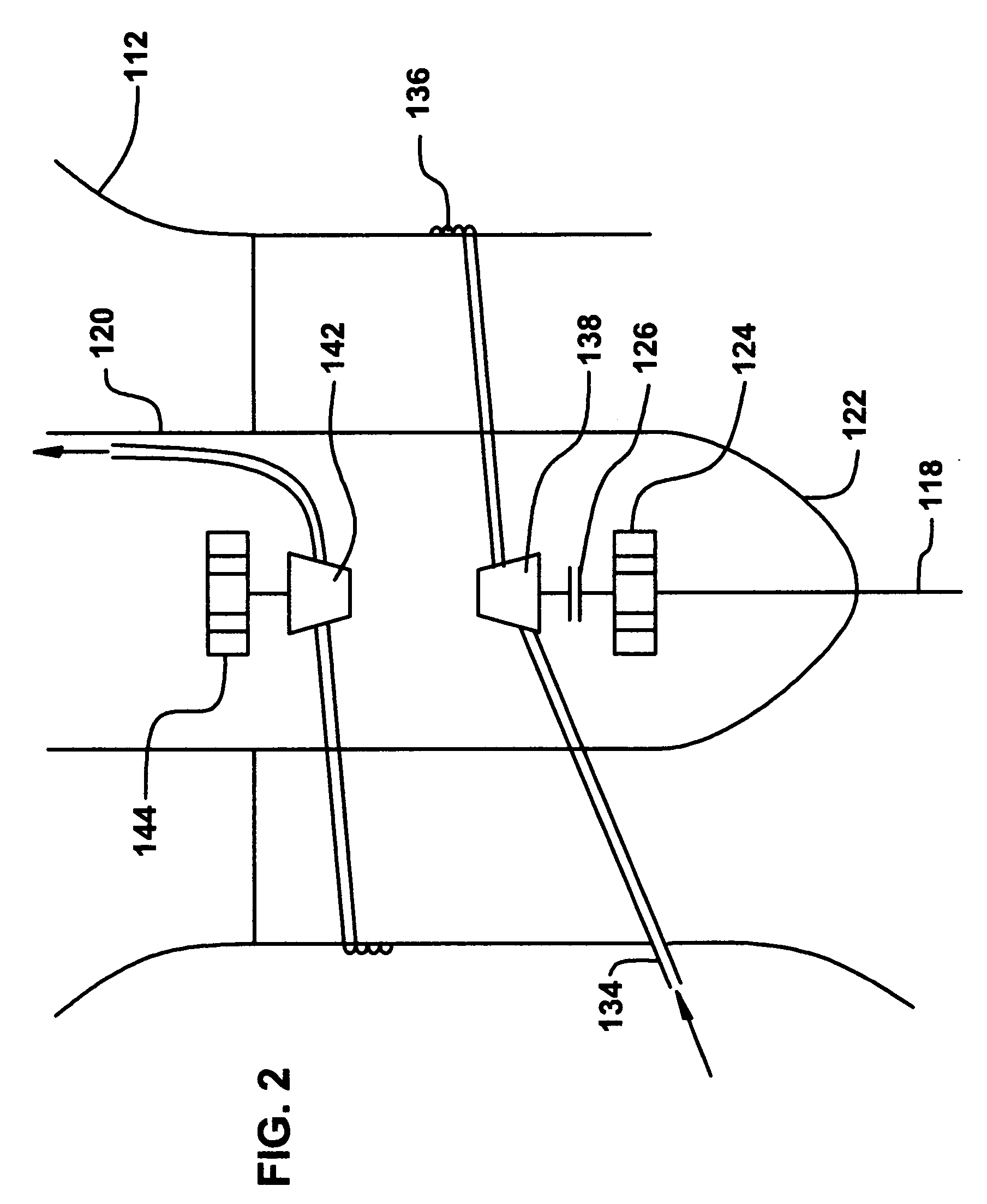Hybrid solar thermal chimney
a solar thermal and hybrid technology, applied in wind motors with solar radiation, electric generator control, machines/engines, etc., can solve the problems of large solar collectors that are expensive to build, prior art requires an expensive buffer, and large tall structures are required
- Summary
- Abstract
- Description
- Claims
- Application Information
AI Technical Summary
Benefits of technology
Problems solved by technology
Method used
Image
Examples
Embodiment Construction
[0014]FIG. 1 shows an overall view of the system 100. The system 100 includes a chimney shell 102. The chimney includes a large flared base 104 that is held off the ground to allow for intake air to flow in. Air flow is indicated by arrows ‘A’. Air flows upward through the chimney shell 102 driven by solar heating that occurs within the chimney shell 102. Within the chimney shell 102 air can be heated by solar energy ‘S’ part of which can pass through window portions 108 of the chimney shell 102. Ideally the chimney shell 102 will primarily be glass or similar material that will allow for a maximum amount of net energy transfer into the chimney shell 102. The flared base portion 104 should ideally be almost entirely transparent. Air travels up through the chimney shell 102 and as it does so it powers the wind turbine 110 located within the chimney shell 102. The air then passes out the top end 112 of the chimney shell 102.
[0015]The first energy system of the chimney shell 102 is pow...
PUM
 Login to View More
Login to View More Abstract
Description
Claims
Application Information
 Login to View More
Login to View More - R&D
- Intellectual Property
- Life Sciences
- Materials
- Tech Scout
- Unparalleled Data Quality
- Higher Quality Content
- 60% Fewer Hallucinations
Browse by: Latest US Patents, China's latest patents, Technical Efficacy Thesaurus, Application Domain, Technology Topic, Popular Technical Reports.
© 2025 PatSnap. All rights reserved.Legal|Privacy policy|Modern Slavery Act Transparency Statement|Sitemap|About US| Contact US: help@patsnap.com



